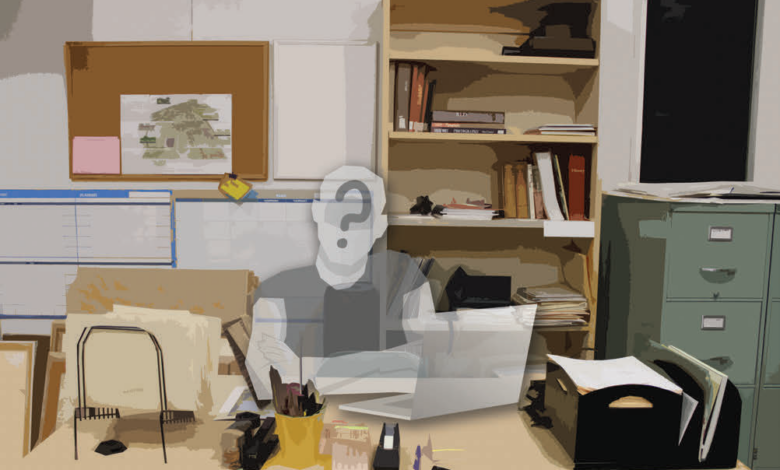
Rider Art Gallery’s demise; first painting sells for $65,000
By Amethyst Martinez
MICHAEL Graves, a world renowned artist and architect, had one of his last shows at the Rider Art Gallery in 2011 before his death at the age of 80 in 2015. Graves isn’t the only well-known artist to have exhibited at the gallery, with a history of over hundreds of shows being held at Rider over the span of decades.
As cuts continue to affect the university, the arts have notoriously taken the biggest slashes, from the program cuts at Westminster Choir College (WCC), to the majority of professors retiring in the next two years departing from the College of Arts and Sciences.
Among the casualties is the Rider Art Gallery, a wheelhouse of artistic expression that once garnered attention from major publications like the New York Times due to the artists and art it would bring to campus. It was known as a center that brought together not only students, but visitors to view art from a variety of well known artists.
Now, the donated art that once was put on display for those who came to see sits in a storage room on campus, stacked on top of each other with cardboard and plastic wrap separating hundreds of prints and paintings, the value truly unknown. The Rider News visited the room with the art, and was asked by university officials to not reveal the location due to the potential value.
The first sale
With no announcement to the university community, Rider recently sold one painting in its collection for $65,000 and is having other works appraised, according to James Hartman, senior vice president for finance and chief financial officer.
As the university struggles to catalog and appraise the art in storage, a vacant desk joins it in the space, once belonging to Julia Marsh, the last art gallery director.
Marsh, who worked at Rider for a little over a year, left in June 2020 to care for her sick father. However, the overarching detail of the art gallery being closed down was in the back of Marsh’s mind when she stepped down.
“I’m not surprised that [a new gallery] was never built, and they never replaced me,” said Marsh. “A lot of things in the art world died during COVID, and some for reasons that make sense, and some that don’t.”
The gallery was shut down shortly before Marsh’s departure to accommodate the need for offices in the Bart Luedeke Center; however, a plan was in place for the building of a new space.
The new location of the gallery, which was announced a month before the pandemic struck, was initially planned for the front end of the Fine Arts building, along with a three story addition to lodge WCC. However, neither construction project came to fruition.
“I saw that the plan for this more accommodating art gallery was gone,” said Marsh. “What was there was like an enlarged entryway that was really just a lobby.”
When the COVID-19 pandemic hit, Rider was no stranger to the financial struggles faced by higher education institutions worldwide, placing the Fine Arts expansion plans at a halt, according to Rider Provost DonnaJean Fredeen.
“It’s not going to happen in the … foreseeable future,” said Fredeen. “I’ll let people define what they think the foreseeable future is.”

‘The artwork was really, really, valuable’
Before Marsh, Harry Naar was the past art gallery director, art curator and fine arts professor at the university who spearheaded the creation of the gallery and retired in 2019.
Naar said that all of the pieces were donated to the school, usually from artists who had exhibited at the art gallery. He added that the university “did not have to pay for a single piece of artwork.”
Although pieces are hung in various places around the university, hundreds of pieces sit in a room waiting to be appraised. The university’s collection spans decades with paintings, sculptures, prints and more donated to Rider, mostly during Naar’s span as art gallery director.
“It was considered really one of the best exhibition spaces in New Jersey, really in the tri-state area,” said Naar. “Artists, when I approached them, no one ever said no. They were thrilled.”
Marsh said that Naar’s departure gave the university the chance to make adjustments to the gallery space.
“The person that developed the gallery and ran it for almost 35 years, when he walked away, I think they saw it as an opportunity to make these changes,” said Marsh.
Marsh also talked about the difficulties of the job, with not enough time to perform the needed work due to her part-time position, as well as the small budget allotted for the gallery.
“I think that Rider didn’t have any real investment … in the gallery the way that other institutions have,” said Marsh. “A lot of universities and colleges see their galleries as being like a draw, and also a conversation space and a place where community can gather, and that is a place of testing the limits of what we consider a contemporary thought.”
‘It was almost criminal’
Mel Liepzig, a nationally known artist from New York and Trenton, New Jersey, was one of the artists who exhibited in the gallery. Now retired, he resides in Cape Cod, Massachusetts, during his summers, and spoke to The Rider News about the loss of the gallery not only to Rider, but the state.
“It was almost criminal … that it has been closed,” said Leipzig. “It was a boon, really, to the reputation of Rider.”

Universities across the country have been selling their art collections in order to dig themselves out of financial turmoil, causing a serious moral question to the validity of selling donated art.
This semester at Valparaiso University in Indiana, the school angered faculty and students with a plan to sell valuable artwork to fund residence hall renovations in an attempt to halt declining enrollments, according to The New York Times.
Rider has recently sold a single painting titled “View Through Elliot’s Shack” by artist Lois Dodd, according to Hartman. He said that the artist is living, endorsed the sale and approved the deposition of the work.
Hartman also said the university has no other plans of selling more artwork, and the funds of the Dodd painting will go toward reducing the university deficit.
Some of the donated art still hangs around campus, mostly due to the work of Naar, who made the decision to showcase the art across the university in an effort to “create a better environment for the administration and for students.” Some of the locations include administrative offices, Bierenbaum Fisher Hall, the library and more.
“It started to inform people that we were culturally involved,” said Naar. “I was really passionate about it.”
Jessi Oliano, a graphic design professor and one of the last on campus who teach visual art, saw the gallery not only as a faculty member but as a student during her time at Rider. She described the importance of an art gallery as “multifaceted.”
Oliano explained, “Art inspires, challenges, and enriches our lives, and it is essential to have a dedicated space where students, faculty and the greater community can come together to experience and celebrate the transformative power of creativity.”
The history of the gallery is neverending, with hundreds of shows showcasing artwork worth millions of dollars combined. Now, Rider has not only lost the art gallery as a creative and cultural space, but also lost the reputation it brought to the university.
“Too many schools, I think the first thing they’ll do is cut the arts,” said Leipzig. “That is not an attitude to have. … It’s important to the culture of the state. It’s important to the reputation of the state…. It was the best gallery in New Jersey. Period.”


